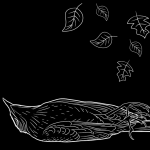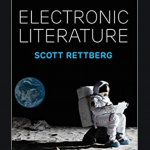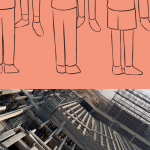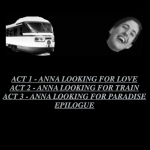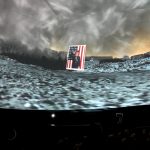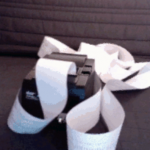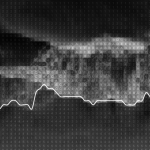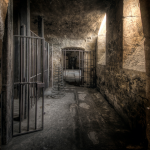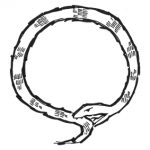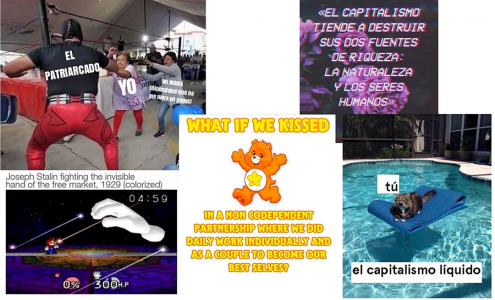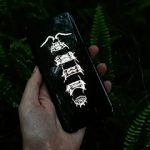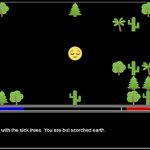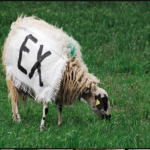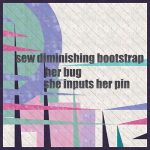2020
Whilst reading Stéphane Vanderhaeghe’s dystopian fiction and touching on Bernard Stiegler's Age of Disruption, Greg Hainge explores the world that now reads us via a universal digitisation.
In the course of her wide ranging review of Scott Rettberg's Electronic Literature, Anna Nacher offers a glimpse into "semi-peripheral avant-gardes" that are more open than other fields of digital culture to decolonization and not restricted to the Anglophone world.
After a programmatic attempt to taxonomize the genre of biographical fiction, Lackey's actual interviews with the genre's representative authors tend to uphold the willfully untamable nature of fiction. Image by Joanna Portelli
A critique of Third Generation, web based electronic literature from a first generation maker and author of "The Moving Word" (2000), Janez Strehovic. Image from Olia Lialina's Ann Karenin Goes to Paradise
Returning to his 2010 essay, “Electronic Literature as World Literature,” Tabbi extends those arguments in light of community built scholarly databases that have since emerged and in contrast to an uncritical tracking of “views, citations, downloads and occasional shared themes” (not to mention an increased precarity of authorship, where one’s scholarly work is basically given away).
For digital practices to be literary, Tabbi argues, our selections need to circulate within various institutional, academic, curatorial, and cultural structures – each of which is devising its own set of relations to the digital. This essay aims to initiate those ongoing conversations and evaluations in the field of born digital, electronic literature. In so doing, Tabbi suggests how acts of close reading can bring scholars into closer contact with one another and also activate the databases where e-lit archives are presently stored, read, curated, and mined for verbal and perspectival patterns. (Which have been described, in broad outline as a kind of distant reading.)
A comprehensive summary of a career that, unlike those of Warhol, Lichtenstein, Katz or most other contemporaries, lets us recognize Joe Brainard as an antecedent of our current, dispersed and all-embracing digital arts practices. As Nathan Kernan argues in 2019, our multimodal online habitus “looks more and more like a Joe Brainard world.” Wojciech Drąg takes us further into Brainard's lifelong refusal of artistic grandeur. An aesthetic of visual attention that purifies objects and pieces of writing where Brainard wonders if he can ¨get by without saying anything.¨
Circularity, performativity, authorial intervention, digressions, interruptions, collage, segmentation, prolific examples, line breaks and humor: Hazel Smith brings each of these approaches and stances to bear on Charles Bernstein's poetic essays and essayistic poetry. In the spirit of which, Smith presents her own essay in parallel sections. The main column advances her critical argument, while the second discontinuous column presents a "Deep Text" generated by Roger Dean, who applied the computer platform Python to word sequences from Smith's first column. image: Charles Bernstein
Pold and Erslev explore third-wave electronic literature -- a practice situated in ¨social media networks, apps, mobile and touchscreen devices, and Web API services” (Flores). At the next conceptual level, however, literary practices of this kind unavoidably take part in representing and reconstructing the metainterface - a space of data collection, standardization, commodification and redistribution that, for better or worse, is our context for a contemporary data realism.
Following the work of Jennifer Gabrys (in Program Earth), Carter contends that electronic literature has the potential to function as a mode of experimental sense-making. By exploring works by Tina Escaja, Mark Sample, and J. R. Carpenter, Carter reveals the limits and potentials of our data-driven epistemes - to expose that which goes unseen, and highlight its significance for how we come to know and respond to the challenges ahead.
A look at experimentation with crypto-machinic codes in Star Foster’s and David Ravipinto’s Slouching Towards Bethlehem.
image by flickr artist Art Hakker
Like many of the "Artistic Reflections" featured in the Cork 2019 e-lit conference, Carpenter's opens out from her own web based works to a "post-digital world, in which invisible layers of data inform our daily thoughts and actions; a post-human world, of vast oceans and ceaseless winds."
Torres and Tisseli ask, isn't it ironic how, as we build machines that mimic thought and language in ever more persuasive ways, the very energy that fuels those machines is making us ever more stupid? Further, by resisting the proprietary technologies commonly present in 3rd generation e-literature, the co-authors advance the notion that being peripheral may actually be the role of e-literature.
Alex Saum-Pascual on e-lit's relocation to platforms with massive user bases, and the beauty of meh.
Fostering a sense of connection or engagement towards the more–than–human world, or what David Abram has termed the “sensual world,” has the potential to allow humans greater understanding of our ecological place in inter–species communities. Digital artist Alinta Krauth enacts this understading with Diffraction, a mobile digital writing artwork that encourages users to experience a heightened sense of more–than–human relationality while outdoors. Krauth's practice–led research advances her argument "by using locative media, and emplaced play, as positive forces for considering our relationships with wild nonhuman Others."
Gathering screen images and texts shared by artist Les folies passagères on Instagram, Gravel-Patry addresses issues of care that affect women on a daily basis, from mental health to body dysmorphia - but also creating expansive life worlds through our relationality with the digital image, how we operationalize it so that we might think and feel our lives differently.
By now, Cultural Ecology, Ecocriticism, and Environmental Humanities can tell us all we need to know about climate change. What's still needed, however, is for authors and artists to reconceptualize environmental issues as social and human questions rather than mere technical ones.
Annie Abrahams reflects on the right classification of her own ... what, exactly? Hypertext work? Net Art, electronic literature, digital art, intermedia art, computer fine arts, internet art, interactive writing experiment, computer art, poetry, flash art, animation, hypermedia, lecture, digital print, performance, opera, sound piece, contemporary art, video art? Rather than settle on tags that were mostly based on technology and didn't say anything about what was experienced through the work, Abrahams now profers a behavioral art that considers human/machine interactions somewhat in the way behavioral science in the 1970s "studied monkey behavior in a cage."
Elaborating on interspecies and translab experimentation. Escaja's interactive digital arts projects reclaim the notion of “transhumant,” a single term for nomadic practices that are shared by both the livestock and its shepherd. Both projects, Negro en ovejas (ovine poem) and Emblem/as, prioritize dislocation and nomadic multiplicity, which constitute a basis for resistance to and reconsideration of monolithic notions and canonical impositions.
Taking his cue from the first line of Lady Mary Wroth’s 17th Century sonnet sequence, “In this strange labyrinth how shall I turn?” Corey Sparks locates readers in a contemporary, procedural sonnet at the intersection of electronic literature, digital edition creation, gaming, and literary poetics. Sparks includes a photo of a reconstructed medieval labyrinth, taken at St. Fin Barre's Cathedral in Cork, Ireland during his attendance at the 2019 Electronic Literature Organization conference.
On feminist futures of electronic literature (and interactive narrative, more broadly construed).
